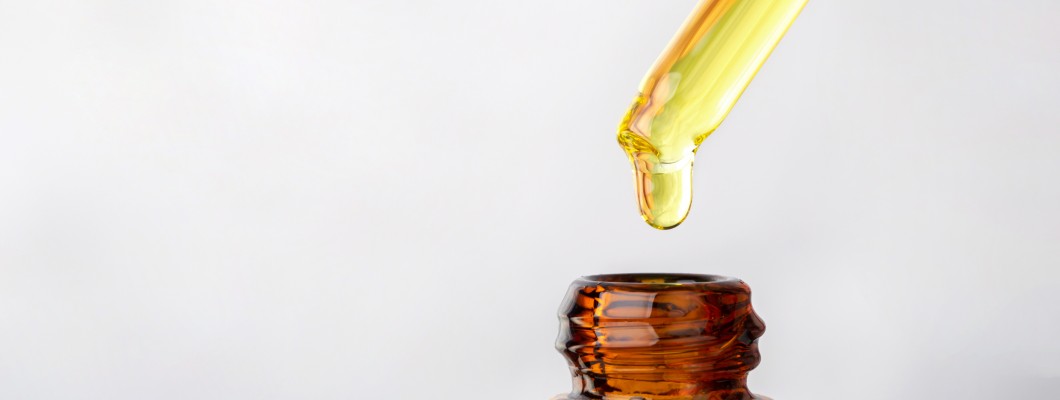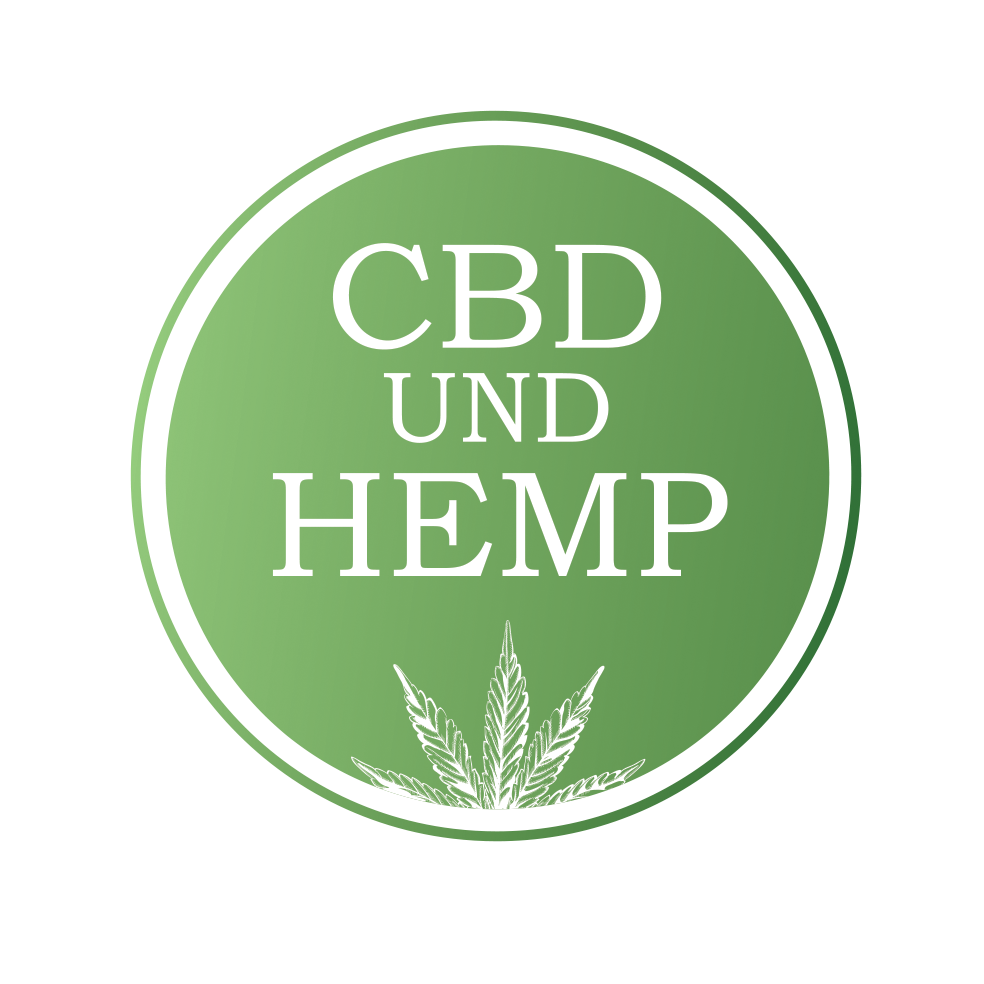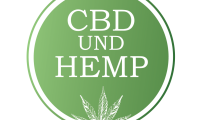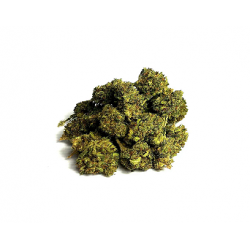
Diseases that are influenced from the CBD Alzheimer's disease Parkinson's disease Multiple sclerosis Huntington's disease Ischemic-hypoxic injury Pain Psychosis Anxiety Depression Cancer Nausea Inflammatory diseases Rheumatoid arthritis Infection Inflammatory bowel and Crohn's disease Cardiovascular diseases and Diabetic complications
CBD stands for cannabidiol, which is one of the active ingredients in the cannabis plant. It is a well-known naturally occurring cannabinoid molecule, or phytocannabinoid, found in the highest amounts in cannabis, i.e. hemp plants, but to a lesser extent in other plants such as flax or azaleas. Like THC, CBD is produced in the inflorescence of the plant, with only negligible amounts in the leaves, stems, and seeds.
Science currently accounts for the existence of more than 100 cannabinoids, with CBD being the second best known and researched alongside THC. CBD, unlike THC, has no psychotropic effect, so it does not cause intoxication, so-called “tearing”. This property is beneficial for patients who want to avoid or reduce the mind-altering effects of cannabis, such as children or the elderly.
The CBD has caused a lot of excitement in recent years - and for good reason.
CBD-rich cannabis varieties and oils with significant therapeutic benefits are often referred to as “medical cannabis without tearing.”
It is used by people to treat many diseases or symptoms:
• Epileptic seizures
- Pain
- Inflammation
- Vomiting nausea
- Anxiety
- Depression
Although this is only a fraction of what CBD can handle, there are still many misunderstandings to consider when talking about this compound.
“Talking about CBD is tricky because there are so many nuances,” says Martin Lee, director of Project CBD. "And one problem is that there are a lot of misunderstandings around him, and even some CBD oil sellers are spreading lies outright."
“It really helps people; the results are sometimes really quite amazing - even if it’s not 100 percent what one hopes for. ”
“But there are still a lot of misunderstandings and we are trying to learn from the doctors who do real cutting edge work with cannabis, as well as from families, patients. We learn from what we discover for ourselves and share information on how to really use CBD therapeutically. ”
Here is some interesting information that can help you better understand this famous compound.
1. CBD is not psychotropic, but…
Unlike THC, CBD does not cause intoxication, i.e., “tearing”. Although CBD is a poor choice for recreational users because of this, it is a significant advantage in medicine, as some health professionals prefer treatments that have minimal side effects.
The reason why CBD is not psychotropic is that it does not exert its effects in the same pathways as THC and binds to CB1 receptors only to a very small extent. CB1 receptors are found in high concentrations in the brain and these pathways are responsible for the psychotropic effects of THC.
A 2011 study published by Current Drug Safety concluded that CBD “does not interfere with psychomotor and psychological functions.” The authors add that several studies suggest that CBD is “well tolerated and safe” even at high doses.
However, Mara Gordon, head of Zelda Therapeutics ’medical cannabis development company, says CBD can have a psychoactive effect on at least some people, while Dr. Ethan Russo states:
“Cannabinol (CBN) is a non-enzymatic oxidative degradation product of tetrahydrocannabinol (THC) found in matured cannabis and produces about 25% of the strength of THC. Tetrahydrocannannabivarin (THCV) is a low-dose neutral antagonist of CB1, but a high-dose agonist and certainly psychoactive, but rarely found in large amounts in the most common cannabis varieties. Finally, although cannabidiol (CBD) is non-toxic, it is definitely anti-anxiety, antipsychotic, and even antidepressant, so rightly, with these abilities, it should be considered psychoactive. ”
2. CBD has a wide range of therapeutic effects.
Despite acting through a different process, CBD in many cases has the same therapeutic effects as THC. According to a 2013 study published in the British Journal of Clinical Pharmacology, studies found that CBD has the following medicinal properties:
- Therapeutic Effects of CBD Diseases and Symptoms
- Antiemetic Reduces nausea and vomiting
- Anticonvulsant Suppresses seizure activity
- Antipsychotic Fights psychotic disorders
- Anti-inflammatory Fights inflammatory disorders
- Antioxidant Fights neurodegenerative disorders
- Anti-tumor / anti-cancer Fights tumors and cancer cells
- Anxiolytic / Antidepressant Fights anxiety and depression
- Painkiller Fights pain and pain-related disorders
WHO note on therapeutic effects
The WHO has published a “review of diseases for which CBD may have therapeutic benefits”. This is derived from research published by Pisanti et al. (2017) in the scientific journal Pharmacology & Therapeutics. The list of diseases includes:
- Alzheimer's disease
- Parkinson's disease
- Multiplex sclerosis
- Huntington's disease
- Ischemic-hypoxic injury
- Pain
- Psychosis
- Anxiety
- Depression
- Cancer
- Nausea
- Inflammatory diseases
- Rheumatoid arthritis
- Infection
- Inflammatory bowel and Crohn's disease
- Cardiovascular diseases and
- Diabetic complications
3. CBD is able to interact with other compounds.
One of the most interesting effects of CBD is its ability to interact with other cannabis compounds such as THC and terpenes.
In a 2011 study, Dr. Ethan Russo describes the combined effect of THC, CBD, and terpenes, which he calls a “social effect”. It is believed that the compounds work together to provide a more beneficial effect to the user than alone.
In the words of Dr. Russo, CBD has a “synergistic contribution” to the effects of cannabis on the body.
4. CBD reduces the negative effects of THC.
CBD appears to provide natural protection against cannabis infiltration. Several studies have shown that CBD prevents the intoxicating effects of THC, including memory impairment and paranoia.
People who have used both cannabis and pure THC for medical purposes prefer natural cannabis when it comes to side effects. It is hypothesized that the CBD plays a role in this preference.
Both CBD and THC have been shown to be incapable of causing fatal overdose. However, to reduce potential side effects, medical users are better off using cannabis varieties that have higher CBD content.
5. CBD is not sedative.
While some early studies attributed a sedative effect to CBD-dominant cannabis formulations, CBD alone is not sedative; in fact, it has a stimulating effect. CBD has been shown to counteract the sedative effects of THC, delay sleep time, and reduce the “hangover” associated with THC. Even at very high doses of pure CBD, such as a single dose of 600 mg, no sedative effect was observed in healthy subjects. Why is there this turmoil? Cannabis varieties that contain high levels of CBD may often also contain significant amounts of myrcene, a potentially sedative terpene.
Occasionally, some patients report that CBD interferes with their sleep. Patients often report that CBD causes alertness, but when they lie down and close their eyes, they do not have trouble falling asleep.
6. A little CBD is not always enough.
The use of very low (micro) doses of cannabis may be suitable for strengthening the endocannabinoid system, avoiding side effects, and preventing cannabis tolerance. However, it may often be necessary to use high doses of CBD, especially if there is no significant amount of THC.
In the treatment of some symptoms, CBD is less effective than THC. While a patient with 3-5 mg of THC achieves the desired effect, 30 to 200 mg of CBD may be needed to achieve a similar result, if at all. And although the symptoms that can be treated with THC or CBD overlap, the way symptoms are alleviated and the individual responses to the two drugs differ significantly.
Studies in which pharmaceutical-grade CBD has been used to treat anxiety, schizophrenia, and epileptic seizures use hundreds of milligrams per dose. This is simply unaffordable for most consumers. But can lower doses of CBD relieve symptoms? The answer is probably yes. Some patients feel more alert, focused, and clear-headed after taking a low dose of 2 to 20 mg of CBD.
7. CBD does not activate cannabinoid receptors.
The endocannabinoid system is an essential part of all of our lives. It helps respond to disease and injury, restores balance at the cellular level, works in all our organs and tissues to stay healthy. This system is thus a natural target for disease known to almost all people when using therapeutic treatments, including herbs, medications, and lifestyle. The hard-to-believe efficacy of medical cannabis in the treatment of nervous, inflammatory, gastrointestinal, psychiatric, infectious and metabolic conditions can be demonstrated by the widespread presence and effects of the endocannabinoid system.
The therapeutic effects of CBD are similar in many ways to its close relative, THC. Both relieve pain, cramps, nausea, anxiety, seizures, and both reduce inflammation. We know that THC works like the endocannabinoids in our body; activates cannabinoid receptors and this leads to cellular activities that restore physiological balance.
We can assume that the CBD works in a similar way, but that is actually a misconception. CBD does not directly stimulate CB1 or CB2 receptors. Instead, when CBD comes in contact with these receptors, it actually reduces their activity, causing a mild to moderate decrease in the effects of THC and endocannabinoid signaling at the CB1 receptor.
Although it can directly reduce cannabinoid signaling, CBD is able to indirectly increase cannabinoid signaling. This is done by inhibiting the breakdown and transport of one of the endocannabinoids, anandamide. One clinical study showed that schizophrenic patients treated with CBD 800 mg daily had significantly increased anandamide levels during treatment.
If one feels that it is difficult to interpret these two opposing properties of CBD, we are welcomed into a world of cannabinoid science full of contradictions and paradoxes. Does CBD take inhibit or stimulate the endocannabinoid system? The answer is probably both, and it probably depends on the individual needs and the amount of CBD used.
8. There are many different CBD products available.
The CBD is known for providing safe, non-psychotropic treatment for a number of health problems. As a result, a number of different CBD products have been developed, including oils, creams, medications, and vaporizers.
CBD oils are concentrated plant extracts for oral use. Medicines containing CBD, e.g. cookies, chocolates and chews are also available.
CBD creams can be applied to the skin and are often used to treat pain in a localized area. CBD can also be evaporated using an oil vaporizer developed for this purpose.
These products can be derived from cannabis or industrial hemp. CBD products made from hemp are often referred to as “CBD hemp oil”.
9. Some people give CBD to pets.
When it comes to our furry friends, CBD is often preferred over THC because it has few side effects.
Some people feel uncomfortable having to give their pet a mind-altering drug, but CBD offers therapeutic effects without a psychotropic effect.
According to veterinarian Dr. Wendy Kramer, “Using only a portion of the cannabinoids found in a plant has great benefits. THC is what causes rupture. ”
CBD products available to pets are designed to treat specific health problems such as anxiety, epilepsy, joint pain, and skin problems.
10. CBD can affect the sleep-wake cycle.
CBD has a so-called “biphasic effect” on sleep, i.e. it has a different effect depending on the dose. Low-dose CBD appears to increase alertness, while high doses have a sedative effect.
At high doses above 160 mg / day, subjects spend more time sleeping. But if they take less than 15 mg a day, subjects are more excited and alert.
CBD appears to counteract the sleep-promoting effects of THC, which may explain why certain types of cannabis increase alertness.
11. CBD from industrial hemp or cannabis?
Industrial hemp and cannabis are like non-identical twins. While there are CBD products derived from industrial hemp that help some patients, industrial hemp is perhaps better suited to produce about 20,000 other products in addition to CBD products.
One problem is that typical hemp genetics still contain much lower levels of CBD than popular CBD-dominant cannabis varieties. In other words, much more plant material is needed from hemp to extract concentrated CBD.
Because hemp is a bio-accumulator, it binds (absorbs) heavy metals and other toxins (chemicals, herbicides, fertilizers, etc.) that are in the soil. When more plant material is used, it increases the potential intake of these other substances.
If we know for sure that the plant was grown in clean soil, we can use it safely, but the final question is not really industrial hemp versus cannabis. We can argue about the pros and cons between the two, but the real issue is “whole plant CBD” versus “isolated CBD”.
12. CBD alone is not such a good idea.
People hear all these great things about CBD and forget that THC is still part of the equation. Even low, non-psychotropic amounts of THC work in synergy with CBD and all the other cannabinoids and terpenes found in cannabis.
People often believe that there is no need for THC in addition to CBD, which can lead to rough recognition. Parents of children with epilepsy experience that there is more than one possibility that a single product that promises to be a miracle cure is actually only a small part of the spectrum that these compounds are capable of.
A recent study in Israel showed that a much higher dose of pure CBD is needed to achieve the same efficacy as whole plant CBD, and the dose needs to be accurate. If the amount of pure CBD was too low or too high, the efficacy was completely lost.
13. CBD can potentially affect other medications.
In some cases, taking a CBD product can trigger or amplify the harmful side effects of other medications taken at the same time as the CBD. So taking CBD can lead to the patient feeling worse than before.
This is certainly a cause for concern and a very complex issue - one more reason to expand our knowledge of the use of cannabis as a medicine.
14. The “lab-tested” CBD is not always as accurate as we might think.
Quality laboratory testing is essential to find out the exact amount of CBD and THC in any product. It is also important that the laboratory has sufficient expertise to measure levels of mold, fungi, microbes, pesticides, and insecticides.
Unfortunately, “laboratory testing” is not an automatic sign of quality assurance in the cannabis industry because many labs are not yet able to make accurate measurements.
When this question arises in the legal cannabis industry, imagine quality assurance in the black market!
To hear horror stories from parents who unknowingly gave their child with epilepsy an oil that actually contained THC instead of CBD, or an oil that was full of dangerous mold and fungi and made the patient even sicker.
15. Consult a medical doctor
Consulting a credible, trusted physician about cannabis is not always that simple, it usually depends on how open, informed, or committed the physician is.
The truth is that cannabis medicine has so many shades — in this case, CBD therapy — that it is paramount to cultivate a relationship with a doctor who is willing to learn about this new science and explore different possibilities with the patient, as well as help issues arising in the field of.
There are patients who find it easy to experiment with cannabis, but others face a very real and serious, often particularly dangerous, health problem. These include retirees, children, cancer patients, patients with PTSD, life-threatening insomnia, chronic depression, chronic pain, arthritis, and many more. However, it is in these cases that the use of CBD can be a reversal.
16. The CBD does not work for everyone.
The success rate of CBD treatments is far from perfect. But many failed CBD attempts can be caused by a number of different factors, either the poor quality of the product or simply the use of the wrong product in a particular case.
Dosage may also affect the efficacy of CBD treatment. Finding the ideal dose can be time consuming and often frustrating. If we are very diligent and patient, we can reduce this process to achieve the most efficient investment of time.
It is important that we do all the possible research to get safe access to good quality products and to find doctors who support patients. However, it should be borne in mind that, despite all the available sources, it may be necessary to try CBD preparations - as with most other medicines.
facts
Diseases that are influenced from the CBD
Alzheimer's disease
Parkinson's disease
Multiple sclerosis
Huntington's disease
Ischemic-hypoxic injury
Pain
Psychosis
Anxiety
Depression
Cancer
Nausea
Inflammatory diseases
Rheumatoid arthritis
Infection
Inflammatory bowel and Crohn's disease
Cardiovascular diseases and
Diabetic complications



















